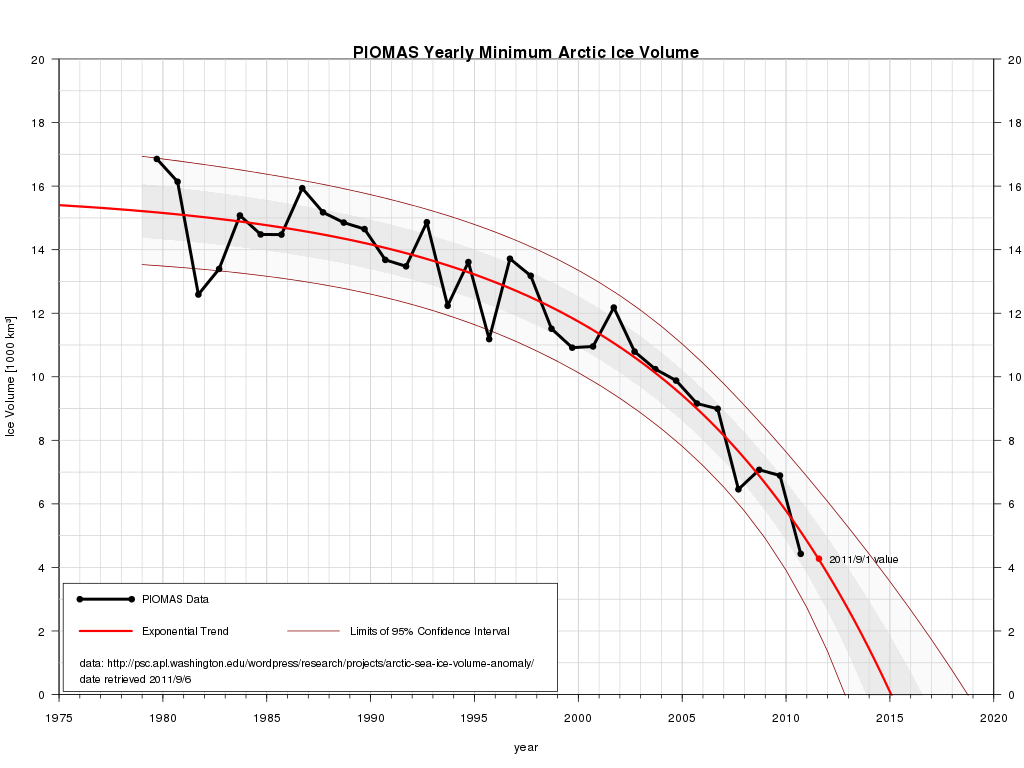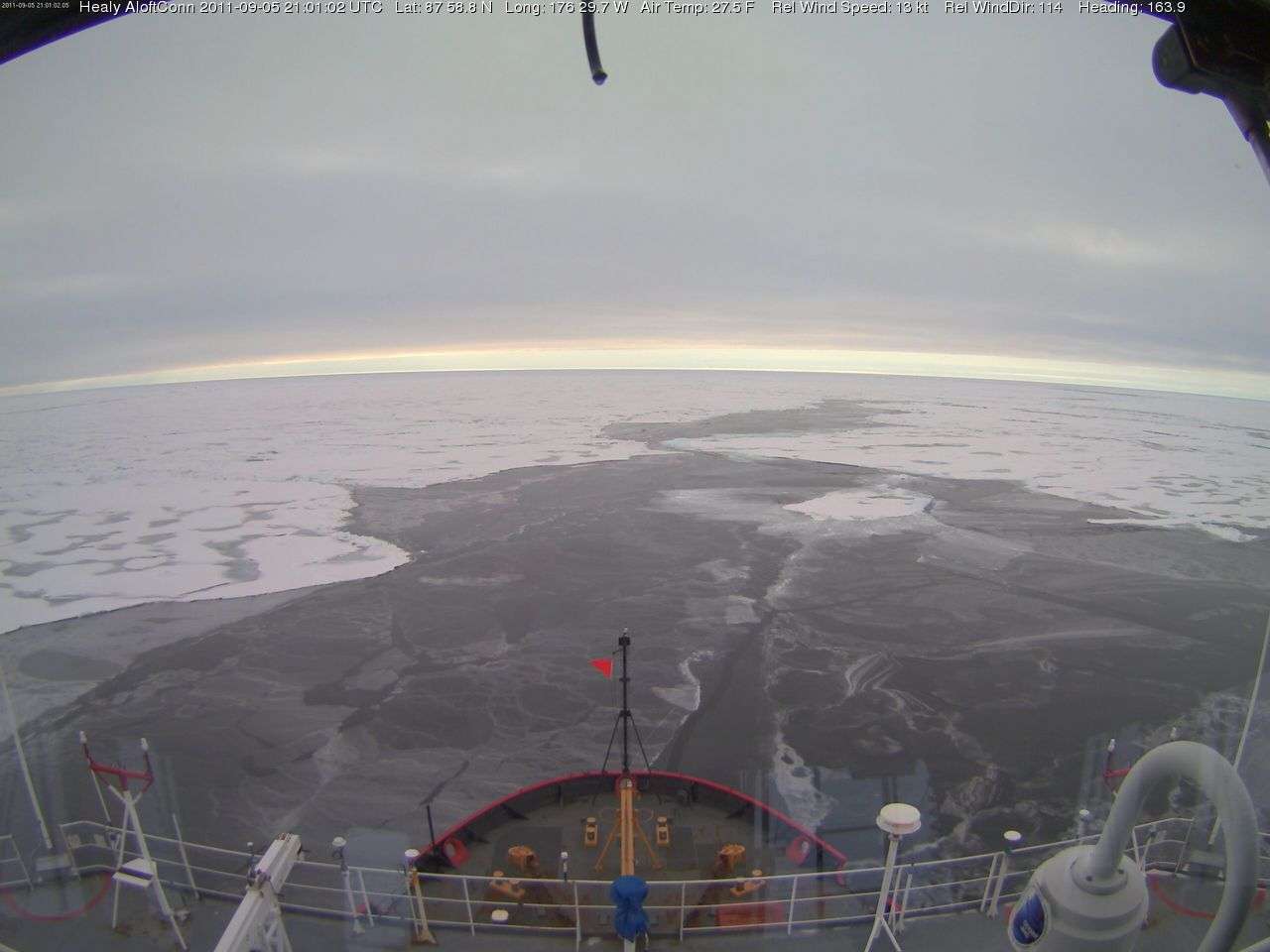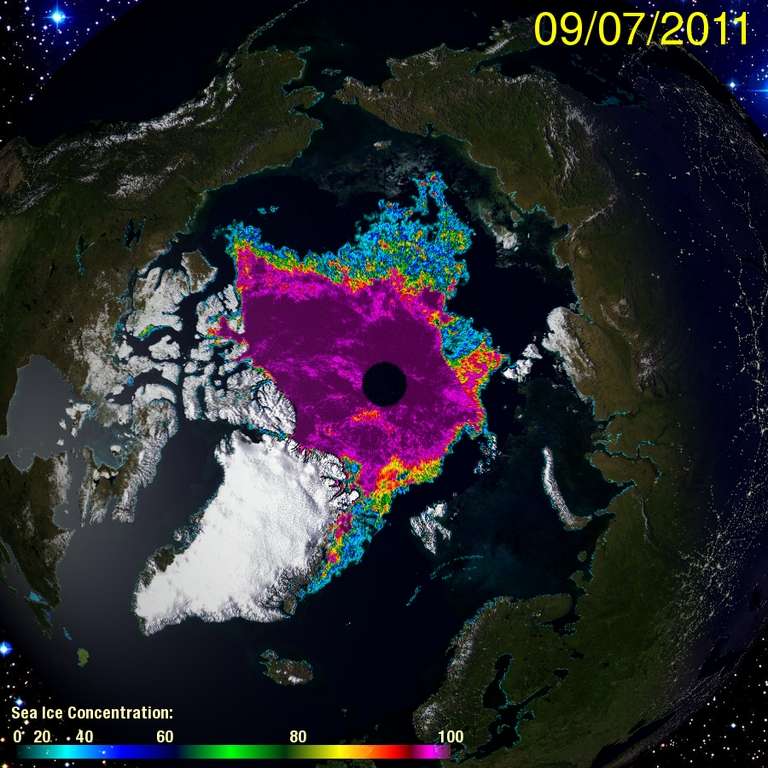The terminal collapse of summer Arctic sea ice accelerated this summer despite unfavorable weather for much of the summer. Much warmer than normal water temperatures entering the Arctic combined with strong heating of Arctic ocean waters in ice free areas to accelerate the downward spiral in ice loss and the upward spiral of Arctic temperatures. Mid-September sea ice volume (minimum) fits an exponential decline curve that hits zero in 2015. At 95% confidence levels mid-September sea ice will be gone sometime between 2013 and 2019, if this curve is predictive. Apparently, multiple positive feedback loops are accelerating Arctic warming and sea ice loss. Because open water adsorbs much more heat than ice and open water releases more heat trapping water vapor than ice, there are multiple positive feedbacks.
Image may be NSFW.
Clik here to view.
In early September melt ponds have frozen back up at 87N near the north pole but small amounts of open water remain this year. Recent photographs from the ice breaker Healy confirm that the ice is very thin this year near the pole.
Photo from the Healy 5 September 2011 at 87 degrees north
Image may be NSFW.
Clik here to view.
However, warm water left over from mid-summer heating of Arctic ocean water continue to melt thin slushy ice (well) off the coast of Siberia into mid September. Arctic sea ice volume, area and extent hit a minimum sometime in mid September every year, depending on the weather. The long-term trend of decline of minimum sea ice volume is shocking no matter how it is plotted.
Neven's blog on sea ice presents regular updates, figures, photos and expert analysis
Image may be NSFW.
Clik here to view.
The University of Illinois' Cryosphere Today calculates the Arctic area covered by sea ice. A record minimum was just reached.
Image may be NSFW.
Clik here to view.
Image may be NSFW.
Clik here to view.
And now, the LA Times has reported, the ice free areas of the Arctic ocean have been discovered to be emitting methane, a greenhouse gas much more potent than CO2. The methane, from a source yet unknown, adds additional positive feedback to Arctic warming and global climate change.
Scientists were surprised to find strong evidence that ocean surfaces laid bare by melting ice are emitting methane at a "significant" rate likely to have "global impact," Wofsy said."It confirms a concern that’s been raised about the removal of ice from the arctic." Wofsy said. "It does look to be significant, and that’s a new result there."
The process by which the open ocean surface is emitting methane, a more potent greenhouse gas than carbon dioxide, is uncertain, Wofsy said, adding that it likely is not from frozen masses of methane known to be in deep oceans, nor from methane being exhaled from newly thawed tundra.
The discovery of this net addition to the atmosphere confirms a "feedback" mechanism by which one phenomenon has a multiplier effect on the contents of Earth's atmosphere, where greenhouse gases have been accumulating at a rapid rate in modern industrial crimes.